Best Way to Clean Your Dishwasher
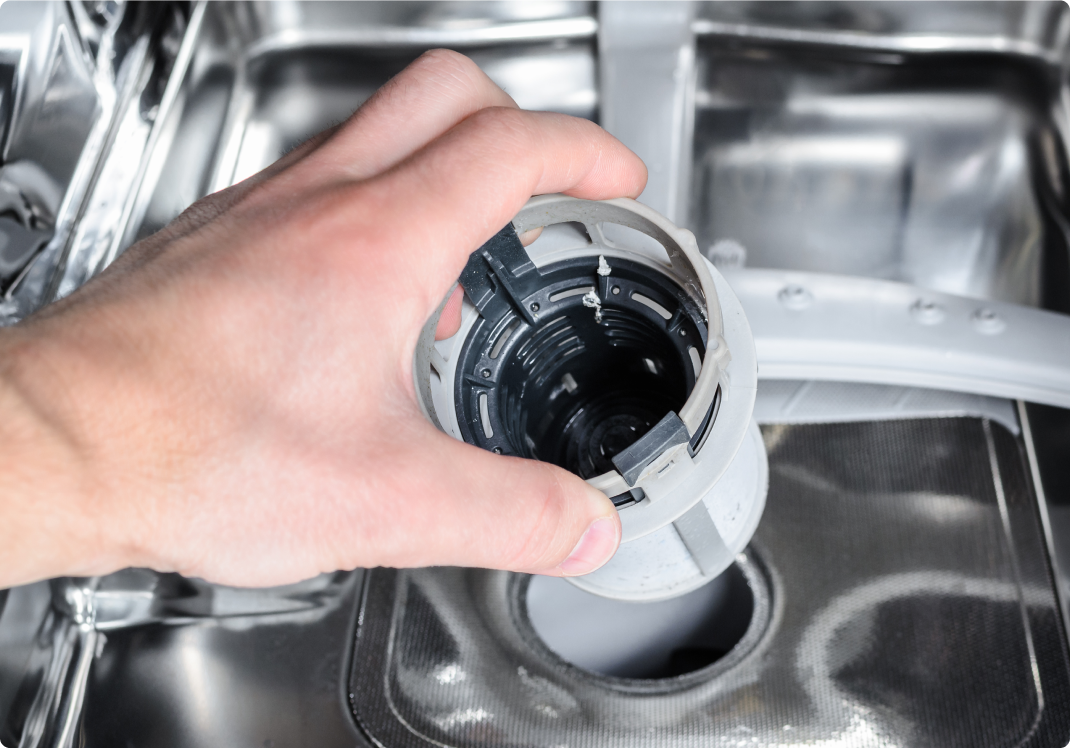
If your dishwasher isn't clean, how can you expect it to clean your dishes? Here are some pro tips on how to clean your dishwasher.


If your dishwasher isn't clean, how can you expect it to clean your dishes? Here are some pro tips on how to clean your dishwasher.
Doesn’t a dishwasher clean itself? Unfortunately, not really. While it feels like the hot water and dish soap that slosh around inside your dishwasher every day should keep the unit clean, the food particles and residue on your dirty dishes get in the way— a lot of that gunk remains in the dishwasher after the cycle. Plus, detergent can form a soap film on the inside of your dishwasher.
You typically only need to clean your dishwasher about once per month, but you may need to do it more often if it’s getting particularly dirty.
Luckily, cleaning your dishwasher doesn’t have to be an overly time-consuming process if you know the right steps.
A sparkling clean dishwasher means sparkling clean dishes, so it’s worth the effort. Grab some white vinegar, baking soda, a soft cloth, and an old scrub brush, and let’s get to work. These six easy diy dishwasher cleaning solutions will have your dishwasher looking (and working) like new in no time.
You’d be surprised what can get caught in the dishwasher drain: bones, crab shells, a Barbie doll head— the sky’s the limit. Service professionals find all kinds of things down there.
As a first step in dishwasher cleaning, check out the drain and remove any debris, food chunks, or other fun stuff that’s hiding down there.
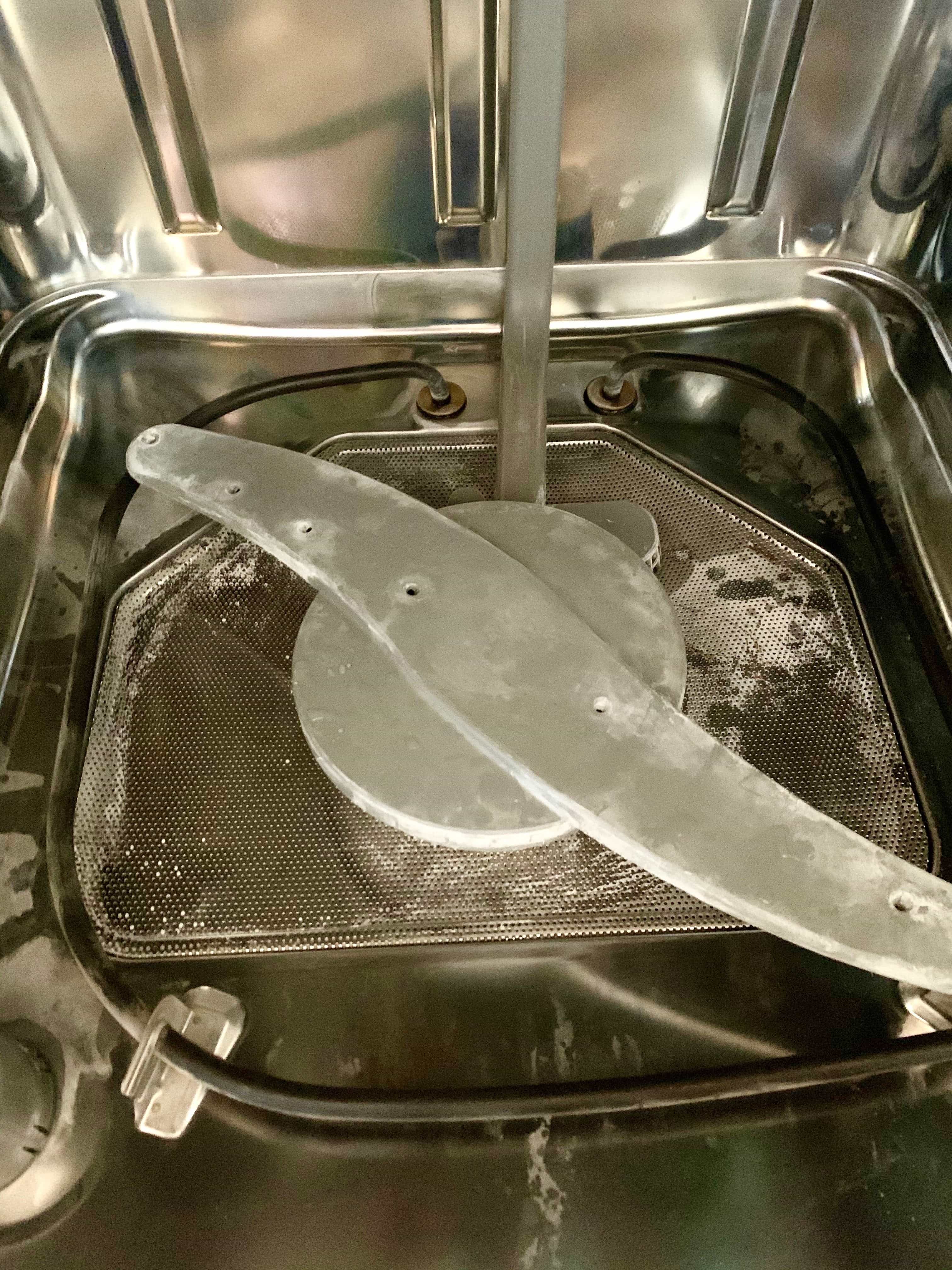
Next, pull out the screen and filter, and clean both thoroughly with soap and hot water. If you want to keep your dishwasher cleaner in general, yank out the bottom rack, and remove any food pieces or other residue from the screen and filter each time you wash a load of dishes. Once you’ve cleaned the screen and filter, you can replace them.
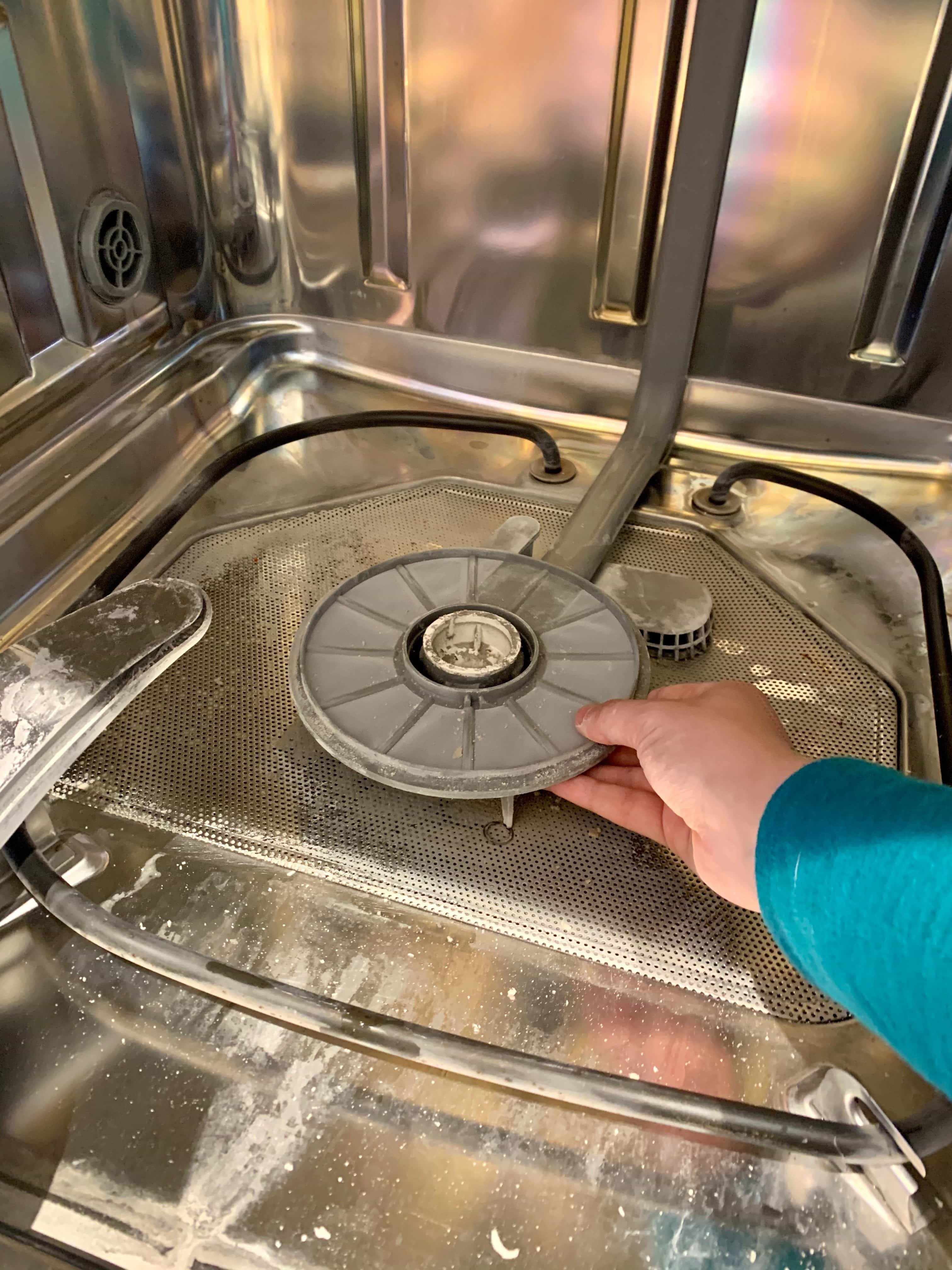
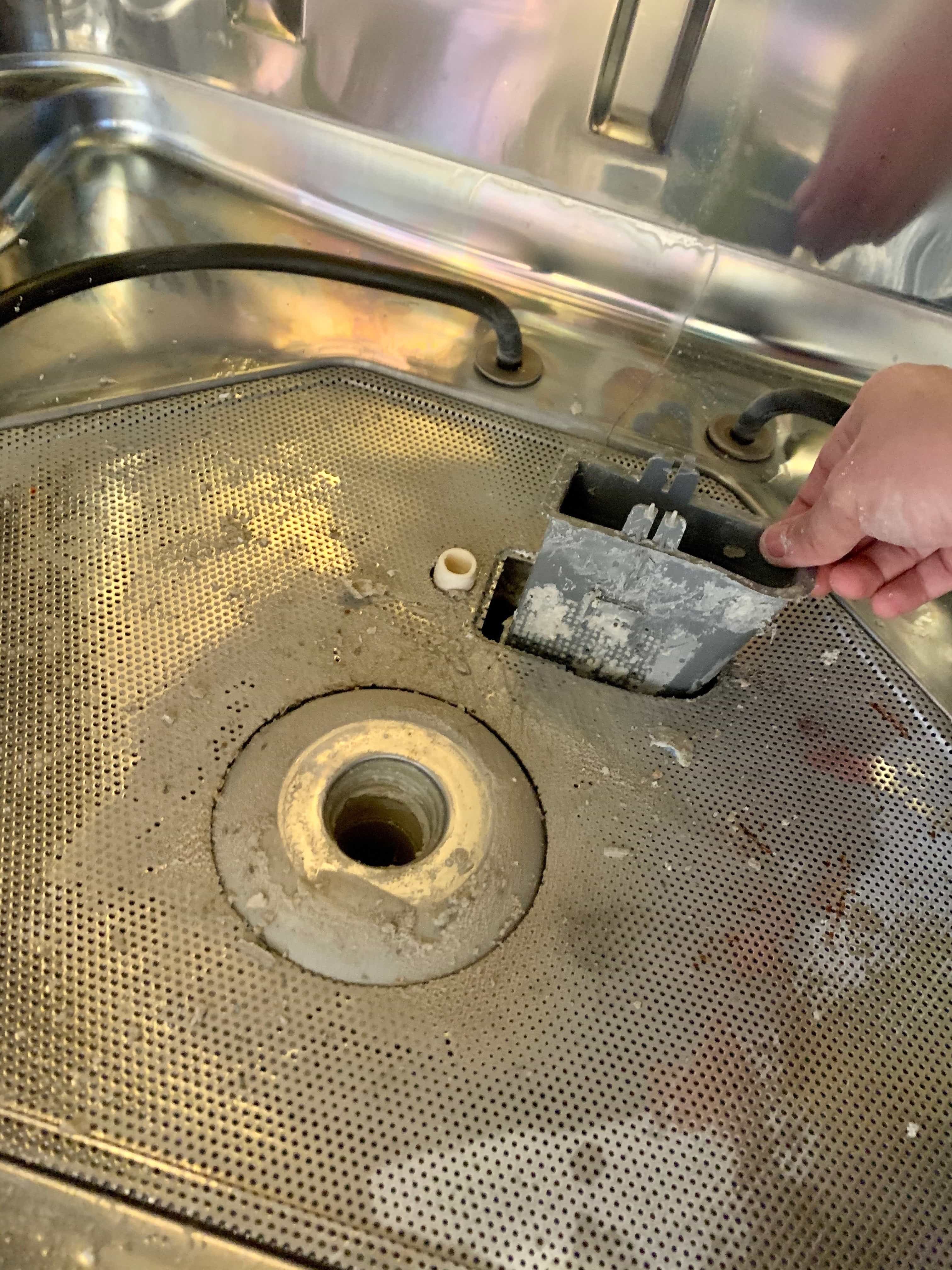
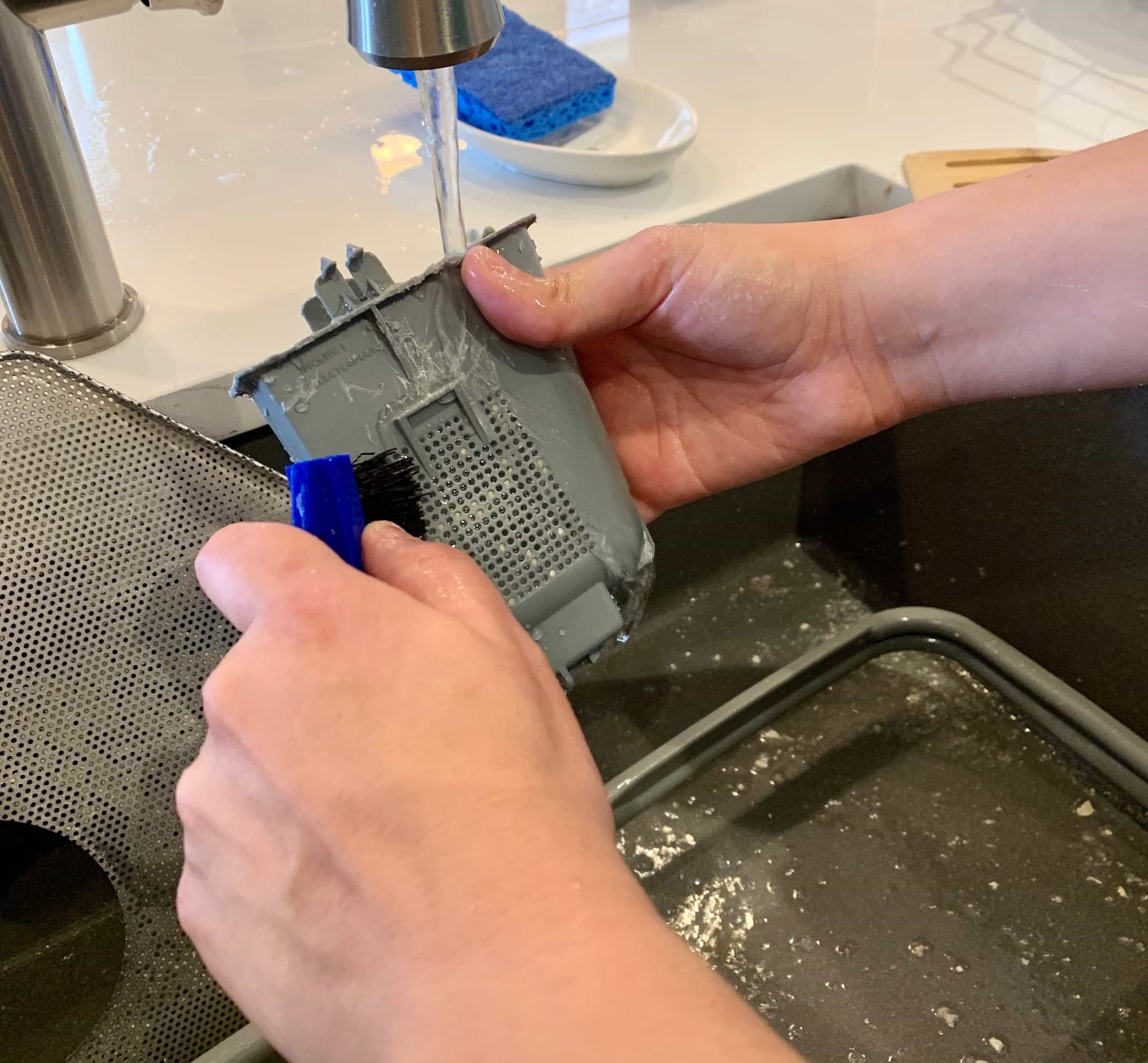
Our home warranty plans help keep your essential appliances up and running.
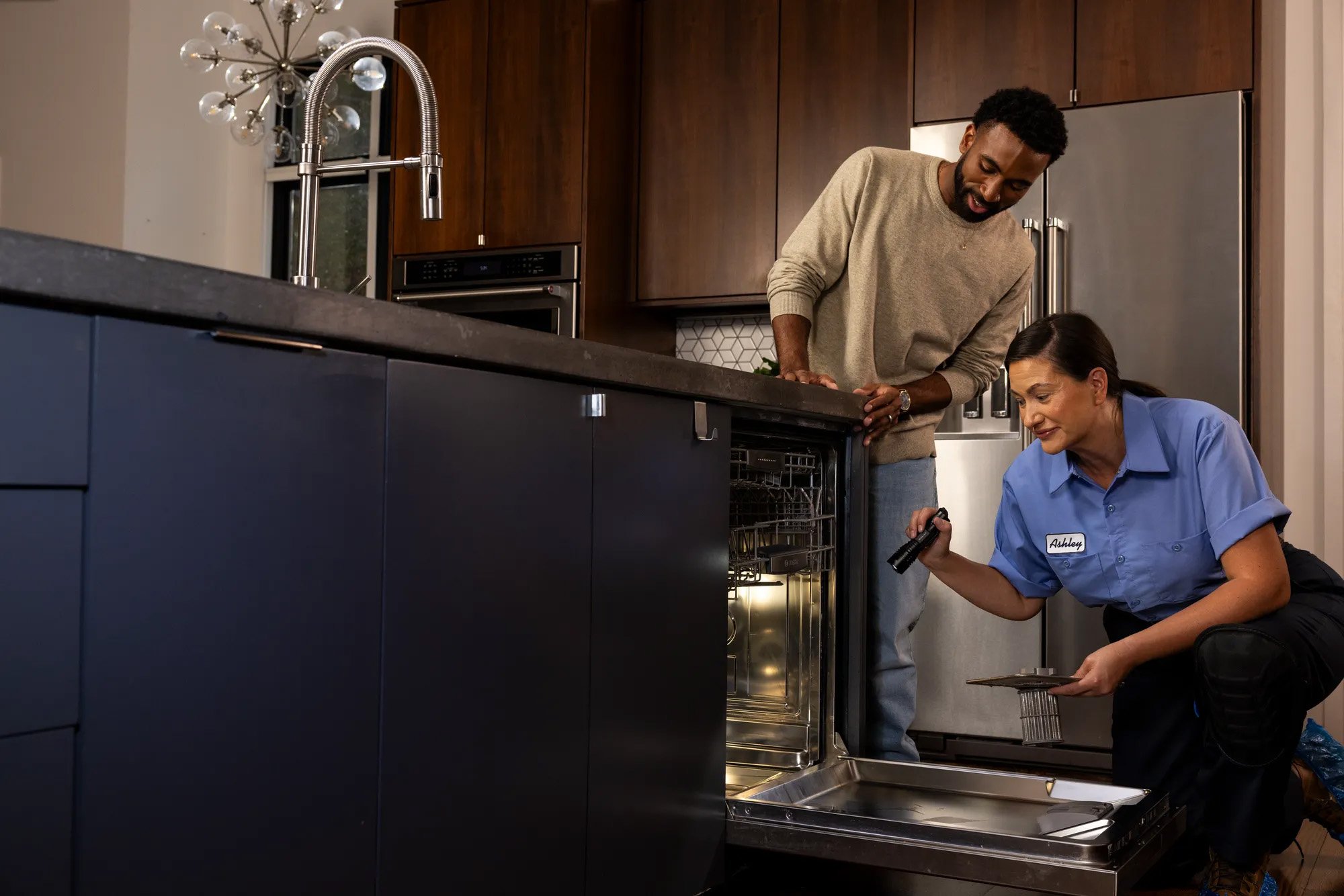
The little holes in your dishwasher’s sprayer arms can get clogged with food residue easily, and this can make the dishwasher less effective. Remove the sprayer arms and use a piece of wire or a toothpick to unclog the holes.

Now it’s time to get down to business— how to clean a dishwasher with vinegar. Put two cups of cleaning vinegar (it’s a little stronger than the eating kind, but if you don’t have any cleaning vinegar, the eating kind will do) in a dishwasher-safe bowl or cup on the top rack of the dishwasher. Run a hot water cycle with nothing else in the dishwasher but that cup or bowl of vinegar. The vinegar will disinfect and deodorize the dishwasher, while also cutting through grease and grime.
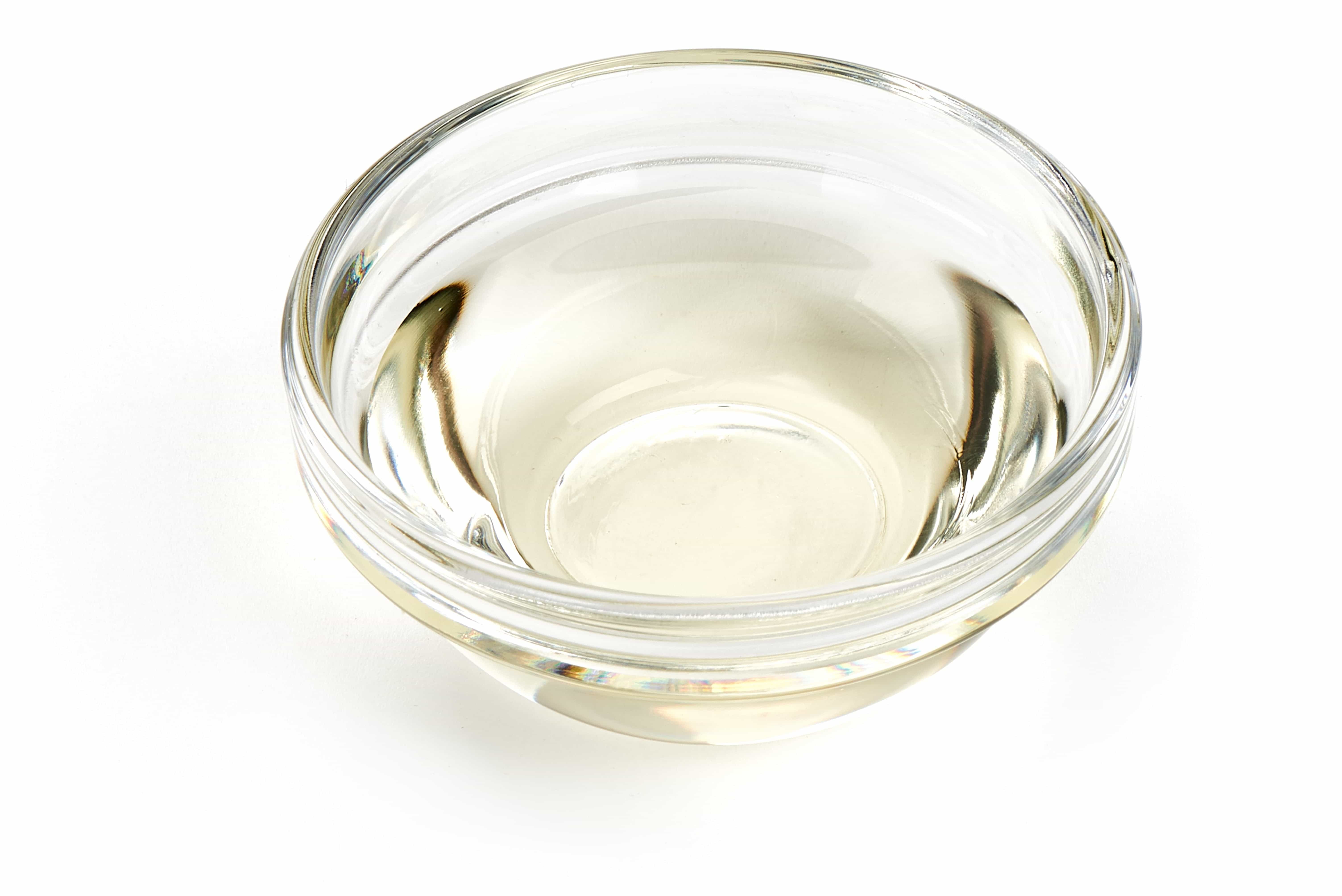
To further deodorize and clean your dishwasher, sprinkle a cup of baking soda on the bottom of the unit and run another hot water cycle— this can be a short cycle, if you want. You can also choose to clean your dishwasher with a commercial dishwasher cleaning tablet, but make sure you follow the instructions on the box. Some of them can be added to a regular dishwasher cycle, but others should be used in an empty machine.
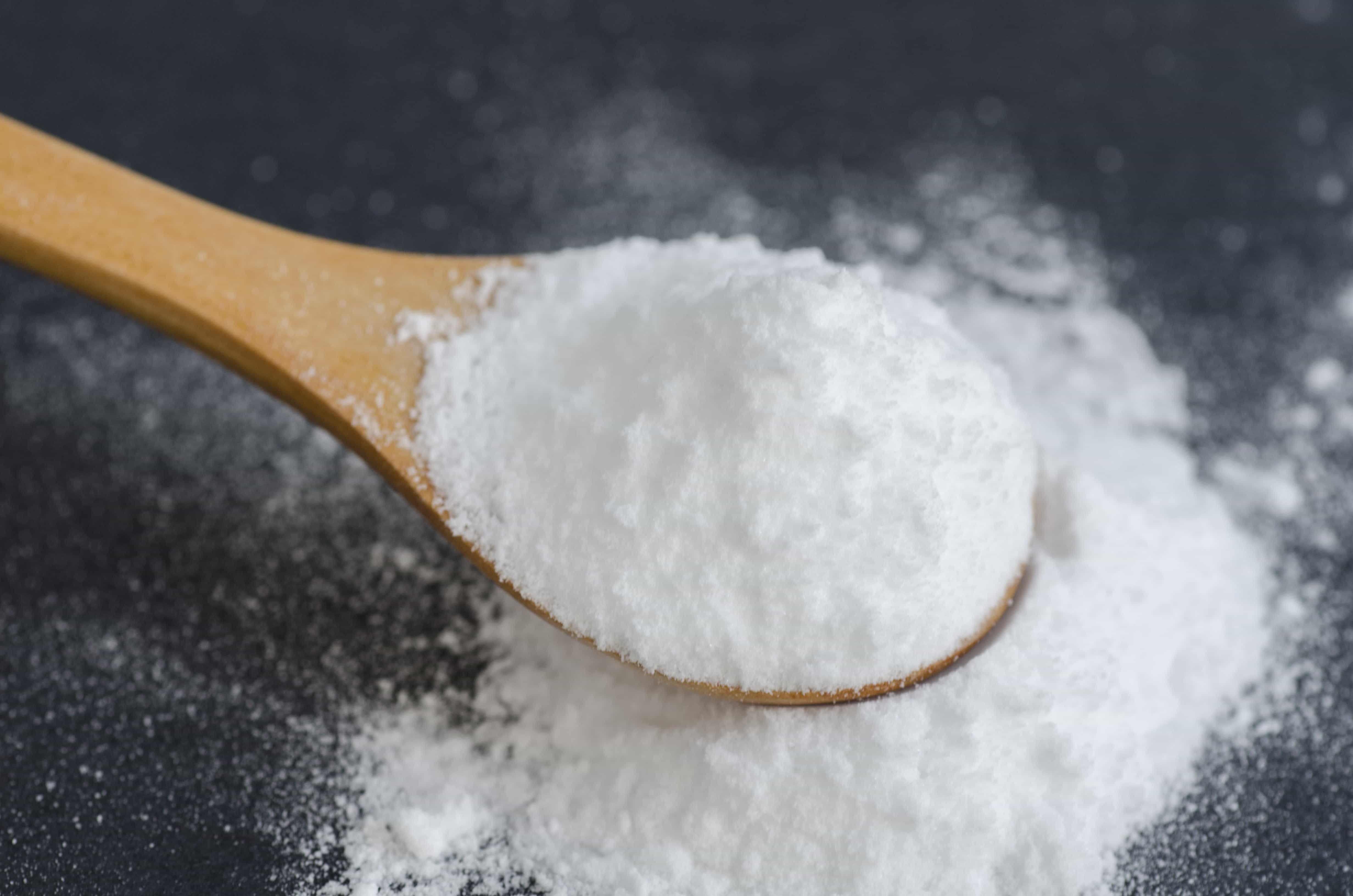
Finally, check out your dishwasher’s door seal, especially if it’s been leaking onto the floor lately. That will happen when the door seal is damaged or worn, but it can also occur when the seal is merely dirty. Clean any debris or food residue from the door seal and while you’re at it, wipe off the dishwasher controls, too.
Maintaining a clean dishwasher is all about simple habits that prevent buildup and keep things running smoothly. Here are some tips to extend that fresh-clean feeling:
Keeping your appliances clean and in top working condition is half the battle of homeownership. But what about those unexpected breakdowns, the kind even the most regular maintenance can’t deter?
With an American Home Shield home warranty, you can feel at ease knowing that your home’s appliances, including your dishwasher, are covered. From your oven to your washer and dryer, let American Home Shield handle the big fixes so that you can focus on the day-to-day. Now that’s a home care tip to feel excited about!
AHS assumes no responsibility, and specifically disclaims all liability, for your use of any and all information contained herein.
Have a plan for your home when things don't go according to plan
Shop Home Warranties